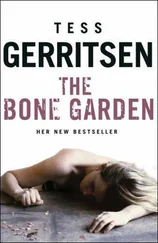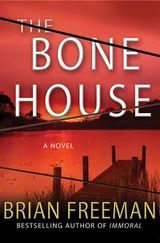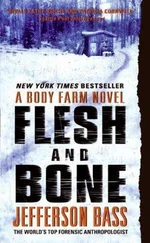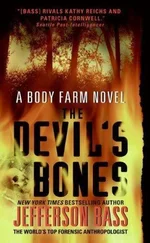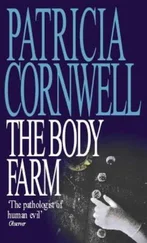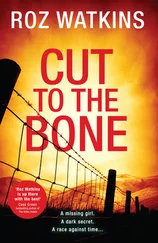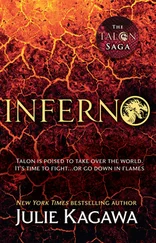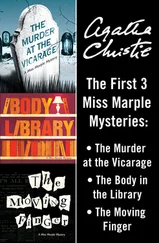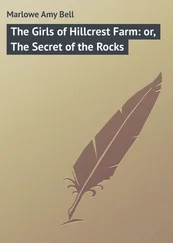Satterfield had kept snakes for most of his life, but the fer-de-lance was different from others he’d had. It was fearless, irritable, and aggressive, and that was on its mellow days. Most snakes in the present situation would’ve sat tight, studying the rabbit for a while, maybe even waiting for it to lower its guard, perhaps even wander foolishly toward the jaws of death. The fer-de-lance, though, after a few more confirmatory flicks of the tongue, slid slowly but confidently toward the rabbit. The rabbit emitted a squeal and then leaped away, huddling in the corner of the cage. The snake slithered along the divider, its head reared, its tongue flicking through open squares in the wire mesh one by one as it drew closer.
Driven by some ancient, embedded survival instinct, the rabbit began lunging against the walls and roof of wire. After a few moments, Satterfield threaded a hand through the opening, managing to corner the creature and extract it from the cage. He cradled it against his chest as it panted, its small heart fluttering as fast as a hummingbird’s.
Once the rabbit had stopped quaking, he lowered it into the cage again, both hands gripping tightly as it began to squirm and struggle. The snake had not moved, and when Satterfield released the rabbit—this time setting it practically against the divider—the triangular head darted forward, striking the mesh with enough force to make the cage shudder. Again the rabbit began battering itself against the corner and top of the cage, as the snake’s head, too, lashed against the screen with primitive force and ruthless frustration. After a few moments Satterfield retrieved the rabbit once more. He’d had a rat die swiftly of fright in just such circumstances on a prior occasion, and he did not want a repeat of that premature disappointment.
By the time Satterfield had performed the ritual half a dozen times—insertion and extraction, insertion and extraction—the rabbit’s quaking was constant, even when it was cradled against his chest; any time Satterfield made the slightest movement toward the cage, the creature began to struggle. Satterfield experimented, extending the rabbit toward the cage and then pulling it away several times without actually putting it inside. The creature was now crazed with terror, all sense of safety having been systematically destroyed. Its breathing was ragged and shallow, and the flicker of the heartbeat felt weaker now, less regular against Satterfield’s palm. The rabbit was clearly approaching exhaustion.
Satterfield, too, was reaching a turning point: He could feel the faint but familiar beginnings of boredom setting in. Leaning down again, he set the shivering rabbit in the cage, and this time he latched the door above it. Then, gripping the protruding handle of the divider screen, he slid the panel upward through the narrow slit, removing it from the cage and setting it aside. All the while, he kept his gaze fixed on the two animals.
The snake’s head swayed slightly toward the rabbit, almost imperceptibly, as if it expected the wire screen to materialize out of thin air. When it did not—when the snake’s reptilian brain sensed that no obstacles blocked the path to its prey—it drew its body into a muscular S, the raised head remaining motionless as the body drew up behind it. It held that serpentine shape for only a moment, then, in the blink of an eye, it straightened and shot forward, its jaws gaping and its fangs snapping down from the roof of the mouth.
Two seconds after the bite, the rabbit was convulsing; ten seconds later, the convulsions gave way to small twitches; another half minute and it lay motionless, its eyes already going glassy in death.
By the time the snake stretched its jaws around the rabbit’s head and began choking down the dead animal—its girth as big as the snake’s—Satterfield had already walked away. The feeding was utterly uninteresting to him, and even the death itself had been only mildly entertaining. No, it was the prelude to death—the surges and spikes of terror he’d learned to orchestrate: that was what he found addicting. Exciting. Arousing, even.
CHAPTER 3
Brockton
PEERING OUT THE GRIMYwindows of my office on the second floor of Stadium Hall, gazing through the thicket of steel girders and concrete ramps, I glimpsed the emerald waters of the Tennessee River spooling past downtown Knoxville and the university. Most of the hundred-yard distance between the stadium and the river was covered in asphalt—parking lots and the four lanes of Neyland Drive—and the pavement shimmered in the late-summer afternoon, creating the illusion that the river itself might begin to boil at any moment. The Anthropology Annex, where I needed to go, was a small, freestanding building fifty sweltering yards away.
When I opened the door and stepped outside, exchanging the stadium’s cool, dark corridors for the sun-soaked outdoors, I felt as if I’d entered a blast furnace. Behind me, bricks radiated the pent-up heat like an oven; ahead, the asphalt lay like a sea of lava, and as I swam across through the heat and humidity, my clothes grew wet with sweat, my shirt plastering itself to my back.
A half-dozen rusting air conditioners jutted from the corrugated metal walls of the Annex, their compressors chugging full blast— full steam, I caught myself thinking ironically as I tugged open the balky steel door and stepped inside. The air conditioners did manage to lower the humidity a few notches, but they hadn’t made much headway against the heat, and none at all against the smell.
The Anthropology Department’s main quarters—built by bricking in the wedge of space beneath Neyland Stadium’s grandstands, decades before—weren’t exactly prime real estate; far from it. But Stadium Hall was palatial compared with the Annex. In winter the Annex was an icebox, rattling in the wind; in summer, it was a solar oven, its metal panels creaking and popping in the heat. And no matter the season, it stank inside, for the Annex was where we did the dirty work of processing human remains: simmering and scrubbing; separating flesh from bone; removing life’s lingering vestiges.
One corner of the processing room was taken up by an industrial-sized sink, which was flanked on one side by an immense steam-jacketed kettle—a cauldron big enough to simmer an entire skeleton—and on the other by a wide counter that ran the length of the wall. The counter was covered with blue surgical pads to absorb moisture from damp, freshly scrubbed bones, and when I entered, Tyler was laying out the last of the bones we’d brought back from the strip mine, neatly arranging them in anatomical order.
Normally I began my forensic examinations at the skull, but in this case—a case where the questions of age and sex seemed to converge, to entwine, in a pivotal way—I found my eyes drawn first to the pelvis, which confirmed what I’d thought in the field: female, beyond a doubt. The hip bones flared widely, giving them the distinctive shape that always reminded me of elephant ears; the sciatic notches—openings at the base of the sit bones where major nerves emerged from the lower spine—were broad, unlike the narrow notches of a male pelvis; and the pubic bone curved outward and down to create a concavity in her belly and birth canal, making room for babies that this particular female would never have.
But if her pelvis said “woman,” her mouth whispered a different, sadder word to me: “child.” If she had lived to be my age, the ripe old age of thirty-seven, her maxillary sutures—the seams in the roof of her mouth—would have begun smoothing out and filling in, eventually becoming nearly invisible. But the maxillary sutures in the skull I cradled upside down in my hand were rough and bumpy, the bones barely beginning to fuse. In fact, if I hadn’t known from years of study that the bones were slowly joining, I might have concluded that something had struck the hard palate at its center, creating a cruciform pattern of cracks. But it was her life, not her palate, that had shattered.
Читать дальше

